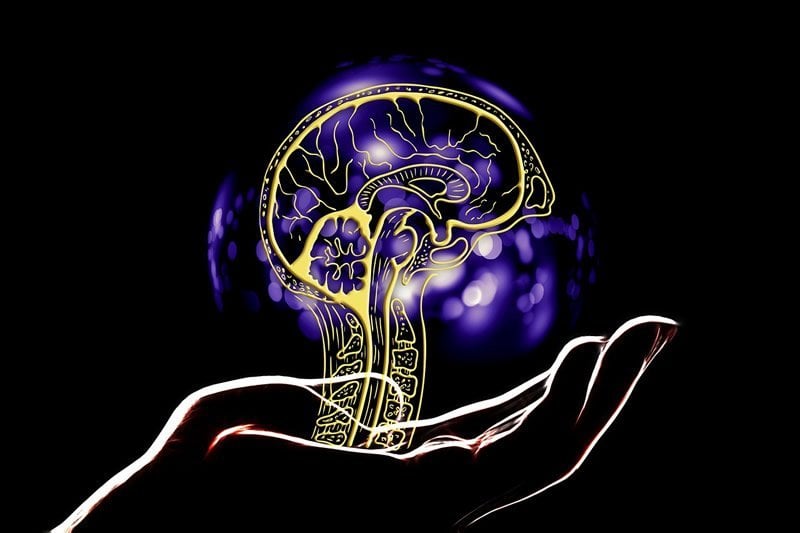Summary: White blood cells in the brain are regulated by the CD33 protein. CD33 decreases the likelihood that a person will develop Alzheimer’s disease.
Source: University of Alberta
Research shows that white blood cells in the human brain are regulated by a protein called CD33–a finding with important implications in the fight against Alzheimer’s disease, according to a new study by the University of Alberta chemists.
“Immune cells in the brain, called microglia, play a critical role in Alzheimer’s disease,” explained Matthew Macauley, assistant professor in the Department of Chemistry and co-author on the paper. “They can be harmful or protective. Swaying microglia from a harmful to protective state could be the key to treating the disease.”
Scientists have identified the CD33 protein as a factor that may decrease a person’s likelihood of Alzheimer’s disease. Less than 10 percent of the population have a version of CD33 that makes them less likely to get Alzheimer’s disease. “The fact that CD33 is found on microglia suggests that immune cells can protect the brain from Alzheimer’s disease under the right circumstances,” said Abhishek Bhattacherjee, first author and postdoctoral fellow in the Macauley lab.
Now, Macauley’s research shows that the most common type of CD33 protein plays a crucial role in modulating the function of microglia.
“These findings set the stage for future testing of a causal relationship between CD33 and Alzheimer’s Disease, as well as testing therapeutic strategies to sway microglia from harmful to protecting against the disease–by targeting CD33,” said Macauley. “Microglia have the potential to ‘clean up’ the neurodegenerative plaques, through a process called phagocytosis–so a therapy to harness this ability to slow down or reverse Alzheimer’s disease can be envisioned.”

Macauley is an investigator with GlycoNet, a Canada-wide network of researchers based at the University of Alberta that is working to further our understanding of biological roles for sugars. GlycoNet provided key funding to get this project off the ground in the Macauley lab and continues to support the ongoing applications of the project.
According to the Alzheimer’s Association, 747,000 Canadians are currently living with Alzheimer’s or another form of dementia. The disease affects more than 44 million people around the world.
Source:
University of Alberta
Media Contacts:
Katie Willis – University of Alberta
Image Source:
The image is in the public domain.
Original Research: Open access
“Repression of phagocytosis by human CD33 is not conserved with mouse CD33”. Abhishek Bhattacherjee, Emily Rodrigues, Jaesoo Jung, Matthew Luzentales-Simpson, Jhon R. Enterina, Danny Galleguillos, Chris D. St. Laurent, Maryam Nakhaei-Nejad, Felix F. Fuchsberger, Laura Streith, Qian Wang, Norihito Kawasaki, Shiteng Duan, Arjun Bains, James C. Paulson, Christoph Rademacher, Fabrizio Giuliani, Simonetta Sipione & Matthew S. Macauley.
Communications Biology doi:10.1038/s42003-019-0698-6.
Abstract
Repression of phagocytosis by human CD33 is not conserved with mouse CD33
CD33 is an immunomodulatory receptor linked to Alzheimer’s disease (AD) susceptibility via regulation of phagocytosis in microglia. Divergent features between human CD33 (hCD33) and murine CD33 (mCD33) include a unique transmembrane lysine in mCD33 and cytoplasmic tyrosine in hCD33. The functional consequences of these differences in restraining phagocytosis remains poorly understood. Using a new αmCD33 monoclonal antibody, we show that mCD33 is expressed at high levels on neutrophils and low levels on microglia. Notably, cell surface expression of mCD33 is entirely dependent on Dap12 due to an interaction with the transmembrane lysine in mCD33. In RAW264.7 cultured macrophages, BV-2 cultured microglia, primary neonatal and adult microglia, uptake of cargo — including aggregated Aβ1–42 — is not altered upon genetic ablation of mCD33. Alternatively, deletion of hCD33 in monocytic cell lines increased cargo uptake. Moreover, transgenic mice expressing hCD33 in the microglial cell lineage showed repressed cargo uptake in primary microglia. Therefore, mCD33 and hCD33 have divergent roles in regulating phagocytosis, highlighting the importance of studying hCD33 in AD susceptibility.






